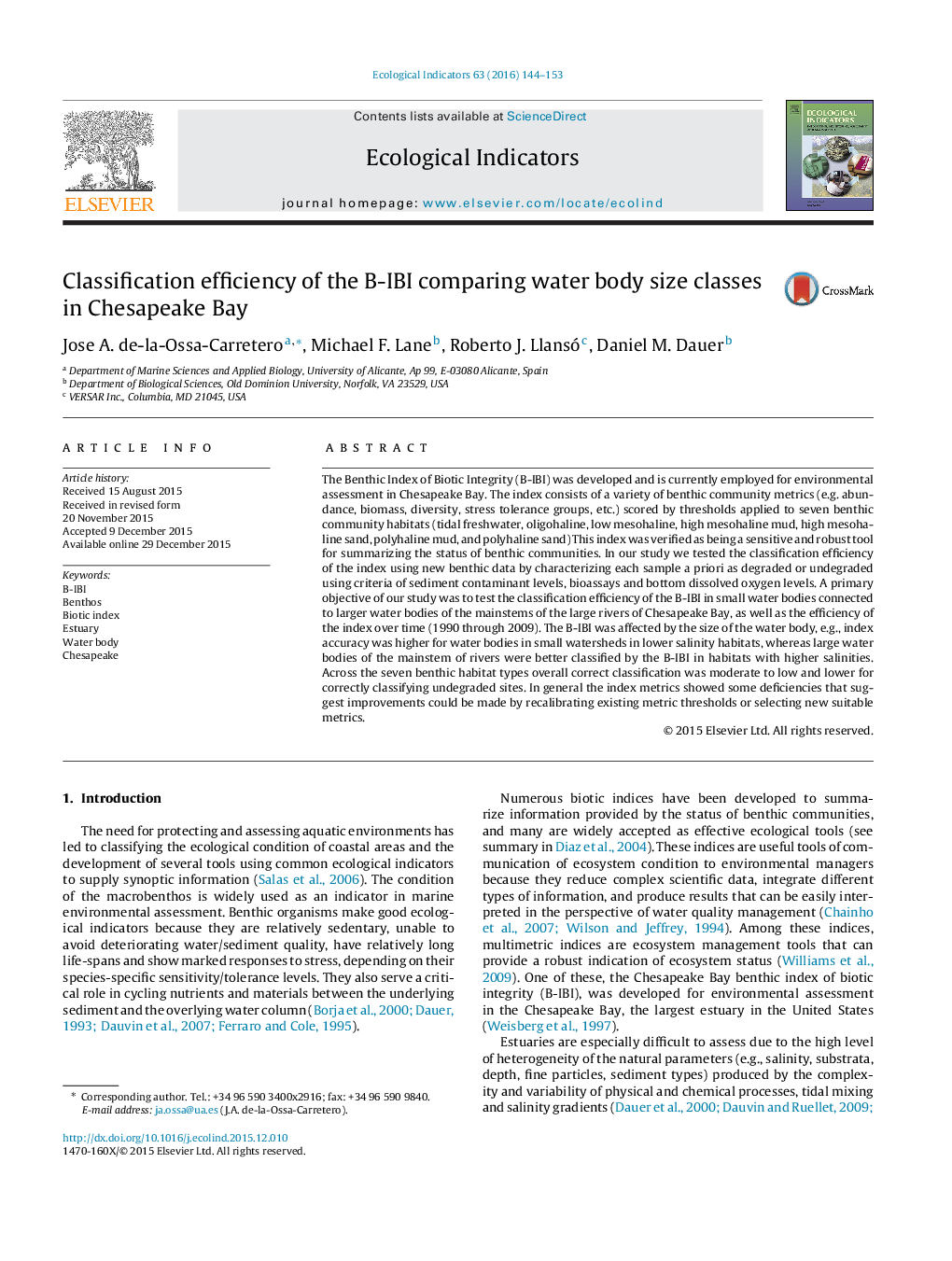| Article ID | Journal | Published Year | Pages | File Type |
|---|---|---|---|---|
| 6293835 | Ecological Indicators | 2016 | 10 Pages |
Abstract
The Benthic Index of Biotic Integrity (B-IBI) was developed and is currently employed for environmental assessment in Chesapeake Bay. The index consists of a variety of benthic community metrics (e.g. abundance, biomass, diversity, stress tolerance groups, etc.) scored by thresholds applied to seven benthic community habitats (tidal freshwater, oligohaline, low mesohaline, high mesohaline mud, high mesohaline sand, polyhaline mud, and polyhaline sand) This index was verified as being a sensitive and robust tool for summarizing the status of benthic communities. In our study we tested the classification efficiency of the index using new benthic data by characterizing each sample a priori as degraded or undegraded using criteria of sediment contaminant levels, bioassays and bottom dissolved oxygen levels. A primary objective of our study was to test the classification efficiency of the B-IBI in small water bodies connected to larger water bodies of the mainstems of the large rivers of Chesapeake Bay, as well as the efficiency of the index over time (1990 through 2009). The B-IBI was affected by the size of the water body, e.g., index accuracy was higher for water bodies in small watersheds in lower salinity habitats, whereas large water bodies of the mainstem of rivers were better classified by the B-IBI in habitats with higher salinities. Across the seven benthic habitat types overall correct classification was moderate to low and lower for correctly classifying undegraded sites. In general the index metrics showed some deficiencies that suggest improvements could be made by recalibrating existing metric thresholds or selecting new suitable metrics.
Related Topics
Life Sciences
Agricultural and Biological Sciences
Ecology, Evolution, Behavior and Systematics
Authors
Jose A. de-la-Ossa-Carretero, Michael F. Lane, Roberto J. Llansó, Daniel M. Dauer,
